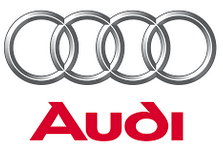 With all the media attention centered recently on companies like Local Motors and Divergent Microfactories, which are both working towards 3D printing road-ready cars, we haven’t heard a tremendous amount about how the current leaders in the automobile industry are using this technology in their manufacturing processes. Besides Ford, most of these companies have been mum when it comes to discussing their manufacturing processes and techniques.
With all the media attention centered recently on companies like Local Motors and Divergent Microfactories, which are both working towards 3D printing road-ready cars, we haven’t heard a tremendous amount about how the current leaders in the automobile industry are using this technology in their manufacturing processes. Besides Ford, most of these companies have been mum when it comes to discussing their manufacturing processes and techniques.
Earlier this month we reached out to one of Germany’s largest auto manufacturers, Audi, to see if, and how, their company utilizes additive manufacturing within the development and production of their vehicles, as well as where they see the technology ultimately fitting into the manufacturing process several years down the road. While some answers are to be expected, others show just how forward-thinking the company really is. Torsten Ronneberger, Strategy Technical Development Head at Audi, was kind enough to sit down and answer a handful of questions we had regarding the company’s additive manufacturing ambitions, to which you will find his responses below.
In what ways is Audi currently using 3D printing for either prototype parts for vehicles or to build actual components?
Audi uses 3D printers in prototype construction (preseries vehicles), in tooling and in production. To date, however, only samples have been produced for design elements such as trim or air vents as well as technology testing components. The technology is not yet being used in volume production. But we can definitely imagine a later use in volume production for such things as customization or in low-volume production scenarios.
What printers are currently being used and when did 3D printing begin being used by the company?
We are currently working with various methods including stereolithography (SLA), fused deposition modeling (FDM), selective laser melting (SLM) and, since the 1990s, selective laser sintering (SLS).
In what ways is 3D printing helping Audi with the manufacturing and design processes?
3D printing allows us to take ideas created on paper or a PC and then implement and test them in three dimensions to see if they work. The technology is therefore very helpful, especially in model and prototype construction.
It also allows us greater freedom in design. 3D printers make it possible to produce workpieces with complex geometries that otherwise could not be realized or that would require very great effort. One example of this is structural components with interior cavities or undercuts that could not otherwise be produced in one piece.
Where do you see 3D printing technology 5 years from now from Audi’s manufacturing perspective?
We want to produce more components with the 3D printer and we want to be able to process not only in plastic but in a broad range of metals. We are currently gathering valuable experience here. In the future, we want to be able to produce complex modules and components with the 3D printer.
In the more distant future, 4D printing could also play a role for us – that is 3D printing with shape memory alloys. We could forgo a lot of mechanics if components were able to change geometrically. For example, rear spoilers that could modify their material structure in the airstream in a way that raises the component.
Are you aware of companies like Local Motors who are 3D printing entire vehicles? What are your thoughts on their approach?
We believe that the complexity of an automobile goes far beyond what a 3D printer is able to do. Along with the car body, aspects such as quality, safety, automotive electronics and functionality play a crucial role that must not be ignored. These things cannot currently be produced with a 3D printer with the level of quality we demand of our models.
Certainly it appears to us that Audi has big plans within the 3D and even 4D printing spaces moving forward. Check out the short video clip below showing some of the current uses for the technology within the company:
Subscribe to Our Email Newsletter
Stay up-to-date on all the latest news from the 3D printing industry and receive information and offers from third party vendors.
Print Services
Upload your 3D Models and get them printed quickly and efficiently.
You May Also Like
Reinventing Reindustrialization: Why NAVWAR Project Manager Spencer Koroly Invented a Made-in-America 3D Printer
It has become virtually impossible to regularly follow additive manufacturing (AM) industry news and not stumble across the term “defense industrial base” (DIB), a concept encompassing all the many diverse...
Inside The Barnes Global Advisors’ Vision for a Stronger AM Ecosystem
As additive manufacturing (AM) continues to revolutionize the industrial landscape, Pittsburgh-based consultancy The Barnes Global Advisors (TBGA) is helping shape what that future looks like. As the largest independent AM...
Ruggedized: How USMC Innovation Officer Matt Pine Navigates 3D Printing in the Military
Disclaimer: Matt Pine’s views are not the views of the Department of Defense nor the U.S. Marine Corps Throughout this decade thus far, the military’s adoption of additive manufacturing (AM)...
U.S. Congress Calls Out 3D Printing in Proposal for Commercial Reserve Manufacturing Network
Last week, the U.S. House of Representatives’ Appropriations Committee moved the FY 2026 defense bill forward to the House floor. Included in the legislation is a $131 million proposal for...



































